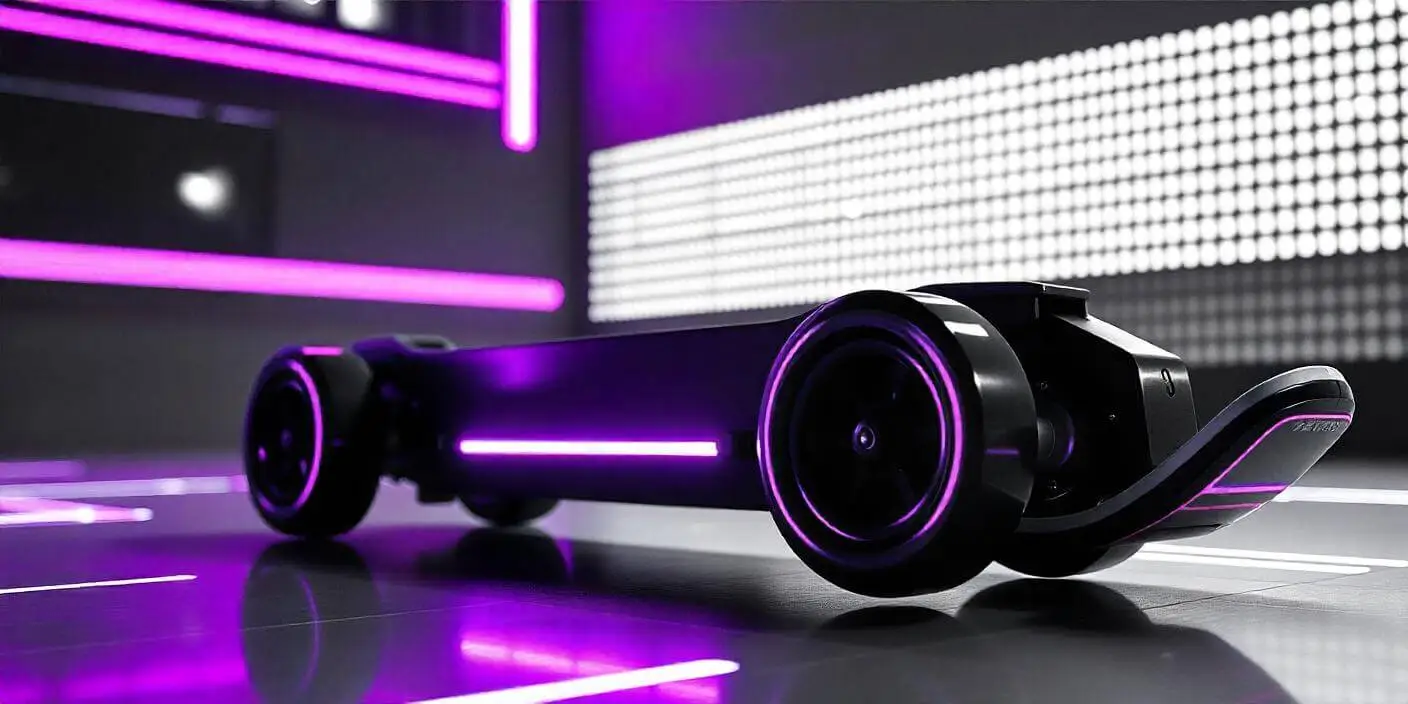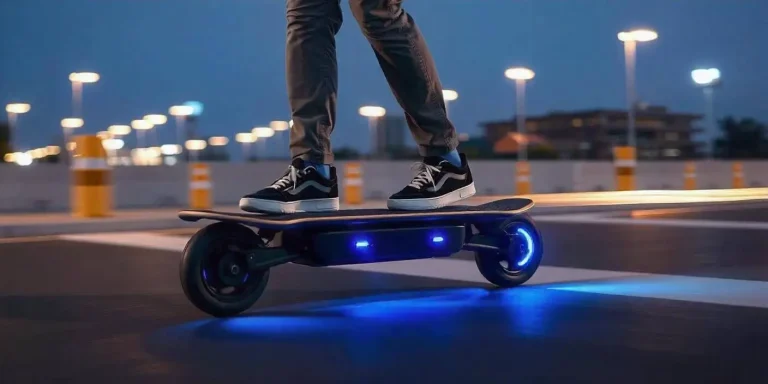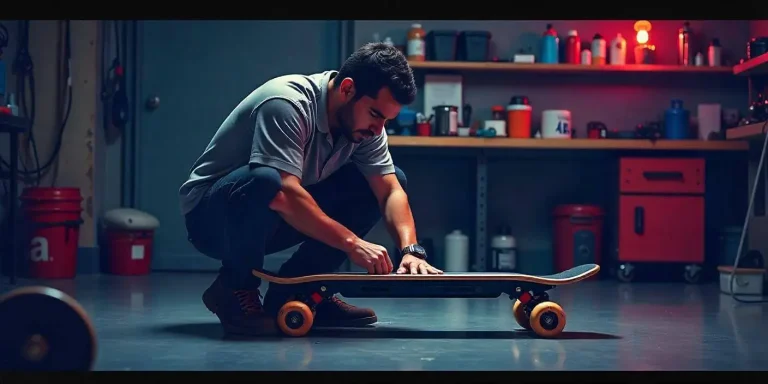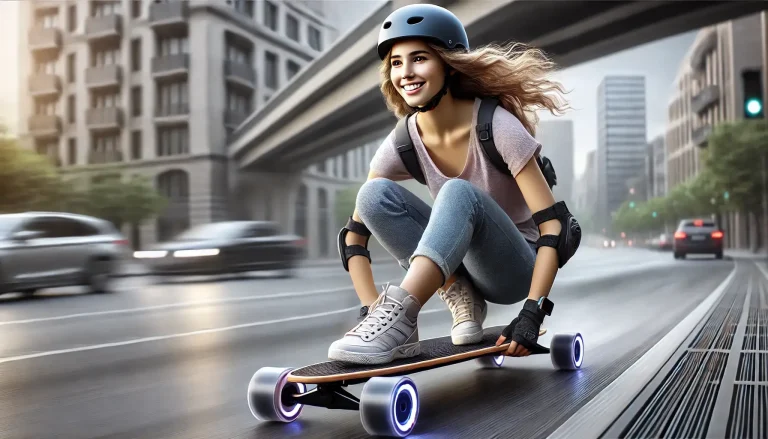How Do Electric Skateboards Work? | The 3 Secret Components That Make Electric Skateboards Zoom
Electric skateboards have rapidly evolved from novelty items into reliable and eco-friendly transportation options. Whether you’re zipping through the streets for fun or using it as a mode of commute, understanding how electric skateboards work can help you appreciate the technology behind these devices. From motor power to battery management, each component plays a crucial role in the smooth and efficient performance of an electric skateboard. In this article, we’ll break down the mechanics of electric skateboards, exploring the critical components that make them tick.

Table of Contents
What Are Electric Skateboards?
Before diving into how they work, it’s helpful to first define what an electric skateboard is. In its simplest form, an electric skateboard is a traditional skateboard that’s been enhanced with an electric motor. This motor allows the rider to travel without kicking or pushing off the ground. The combination of technology and classic skateboarding principles makes it a unique mode of transportation. However, understanding how these boards work requires a deeper look at their core components.
How Do Electric Skateboards Work: The Basics
Electric skateboards operate on the same fundamental principles as regular skateboards: you stand on a deck, and the wheels rotate beneath you. However, when powered by electricity, the mechanics change. Electric skateboards have three primary components that make them work:
- Motor: The electric motor provides power to the wheels.
- Battery: The battery stores the energy that powers the motor.
- Remote Control: The remote is the interface between the rider and the skateboard, allowing speed control and braking.
Together, these components create a smooth ride, powered by electricity rather than physical effort.
Understanding the Motor in Electric Skateboards
The motor is the heart of an electric skateboard, converting electrical energy from the battery into rotational energy to drive the wheels. Electric skateboards typically use two types of motors: hub motors and belt-driven motors.
- Hub Motors: These are integrated directly into the wheels of the skateboard, which makes them more compact and efficient. Hub motors require less maintenance because they have fewer moving parts, but they can be harder to repair if they break down.
- Belt-Driven Motors: These motors use belts and pulleys to transfer power from the motor to the wheels. They are generally more powerful and provide better acceleration, but they require more maintenance and adjustments.
Both types of motors offer a smooth ride but vary in terms of power and ease of maintenance.
How Does the Battery Work in Electric Skateboards?
The battery is another crucial component of an electric skateboard. It stores the electrical energy that powers the motor and other components. Most electric skateboards use lithium-ion (Li-ion) batteries, which are known for their high energy density, long lifespan, and lightweight properties.
The capacity of the battery—measured in watt-hours (Wh)—determines how far the skateboard can travel on a single charge. A larger battery capacity means a longer range, but it can also add weight to the board. Battery life is typically affected by factors such as terrain, rider weight, and speed settings.
Remote Control: The Rider’s Interface
The remote control is how the rider interacts with the electric skateboard. It allows you to control speed, braking, and sometimes other features like regenerative braking or changing ride modes. Most remotes operate through radio frequency (RF), sending signals to the board to adjust the motor’s power.
- Throttle: The throttle controls the acceleration. Pressing it increases the speed, while releasing it slows the board down.
- Brake: The brake button or lever allows the rider to slow down and stop the skateboard. Some boards feature regenerative braking, which recharges the battery when you decelerate.
- Speed Modes: Many boards have multiple speed settings, allowing you to choose between eco-friendly, normal, or sport modes based on your skill level and desired speed.
The remote control connects wirelessly to the board and is essential for controlling the speed, direction, and braking.
Regenerative Braking and Battery Conservation
One of the advanced features of many electric skateboards is regenerative braking. This system captures kinetic energy during braking and converts it into electrical energy, which is then sent back into the battery. This process helps extend the range of the skateboard, making it more efficient.
Regenerative braking is not only good for increasing battery life but also for creating a smoother, more controlled ride, especially on downhill slopes. However, it’s not available on all models, so it’s important to check the features of the specific board you’re considering.
Key Components That Make Electric Skateboards Function
To break down the process further, here’s a breakdown of the key components in an electric skateboard:
- Deck: The deck is the board you stand on, typically made from materials like bamboo, fiberglass, or carbon fiber. It’s designed to be lightweight yet durable.
- Wheels: The wheels of an electric skateboard are slightly larger than those of traditional skateboards to accommodate the motor. They are often made of urethane, providing a good grip on most surfaces.
- Truck: The truck is the part of the skateboard that connects the deck to the wheels. It allows the skateboard to turn and provides stability.
- ESC (Electronic Speed Controller): The ESC is the brain of the skateboard, managing the communication between the motor, battery, and remote control. It ensures smooth acceleration and braking and protects the system from overloads.
How Fast Do Electric Skateboards Go?
The top speed of an electric skateboard depends on various factors, including the motor, battery, and rider weight. Most electric skateboards reach speeds between 15 and 30 miles per hour (24 to 48 km/h). Some high-performance models can go even faster, while entry-level boards may be limited to around 12 mph (19 km/h).
Speed can also vary depending on terrain. For instance, riding on a flat road will allow for higher speeds, while hilly or uneven terrain might limit the maximum speed.
How Long Does the Battery Last?
Battery life on electric skateboards is measured by range, which is the distance the skateboard can travel on a full charge. The range can vary from 7 to 30 miles (12 to 48 kilometers), depending on the size of the battery, the motor’s power, and the conditions of the ride.
In general, the larger the battery capacity, the longer the range. However, several other factors—such as the rider’s weight, the terrain, and how aggressively the skateboard is used—can impact the battery life.
Are Electric Skateboards Eco-Friendly?
Electric skateboards are a more eco-friendly option compared to traditional gasoline-powered vehicles. They emit zero direct emissions, making them a greener choice for urban commuting. Moreover, since they don’t require gasoline, they help reduce overall carbon footprints.
However, the environmental impact of electric skateboards should be considered in terms of battery production and disposal. Lithium-ion batteries are recyclable, but improper disposal can lead to environmental harm. As such, it’s important to properly dispose of and recycle the batteries when they reach the end of their life.
Can You Ride an Electric Skateboard in All Weather Conditions?
Riding an electric skateboard in certain weather conditions can be risky. For example:
- Rain: Most electric skateboards are not designed to be waterproof, so riding in the rain could damage the motor, battery, or electrical components.
- Snow or Ice: Ice and snow can make the surface slippery, increasing the risk of falling or losing control.
- Heat: Excessive heat can cause the battery to overheat, potentially reducing its lifespan.
It’s always important to check the manufacturer’s guidelines for the recommended conditions in which to use the board.
What Are the Advantages of Electric Skateboards?
Electric skateboards offer several benefits:
- Eco-Friendly: As mentioned, they reduce carbon emissions.
- Convenient: They provide a fast and efficient way to travel short distances.
- Cost-Effective: When compared to cars or public transport, electric skateboards are an affordable option for city commuting.
- Fun: Riding an electric skateboard is an exciting experience and a great way to enjoy the outdoors.
What Are the Disadvantages of Electric Skateboards?
Despite their advantages, electric skateboards have a few drawbacks:
- Battery Life: Limited range can be an issue, especially for long commutes.
- Price: High-quality electric skateboards can be expensive.
- Weather Restrictions: As mentioned, they are not ideal for all weather conditions.
- Learning Curve: Riding an electric skateboard can take time to master, especially for beginners.
Frequently Asked Questions
How long does it take to charge an electric skateboard?
It typically takes 1.5 to 5 hours to fully charge an electric skateboard, depending on the battery size and charger type.
Can I ride an electric skateboard uphill?
Yes, many electric skateboards are designed to handle inclines, but the performance will depend on the motor power and battery capacity.
How much do electric skateboards cost?
Electric skateboards range from $300 to over $2,000, depending on the brand, motor power, and features.
Are electric skateboards legal to ride on public roads?
Laws regarding electric skateboards vary by location, so it’s important to check local regulations before riding in public spaces.
Can I ride an electric skateboard without a remote control?
No, the remote control is essential for controlling speed, braking, and direction on most electric skateboards.
What maintenance is required for an electric skateboard?
Regular maintenance includes checking the motor, battery, wheels, and remote control. It’s also important to clean the board and ensure all components are functioning correctly.
Conclusion
Electric skateboards offer a thrilling, eco-friendly, and convenient way to travel short distances. By combining traditional skateboarding with cutting-edge technology, these devices have become a staple for many commuters and recreational riders alike. Understanding how electric skateboards work—from the motor to the battery and the control system—can help you make more informed decisions when choosing or using one. Whether you’re a beginner or an experienced rider, the electrifying ride of an electric skateboard is a fantastic way to get around.






